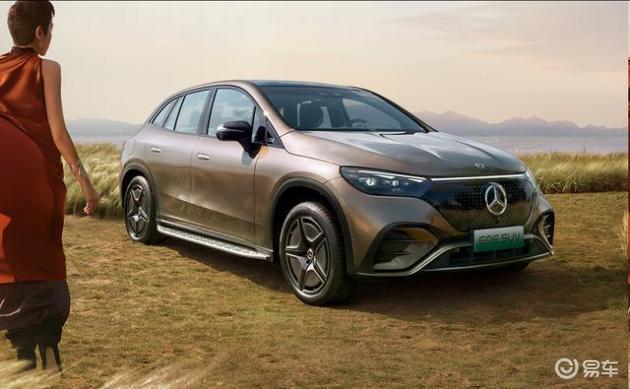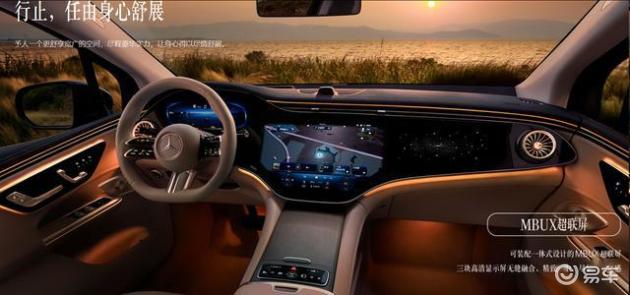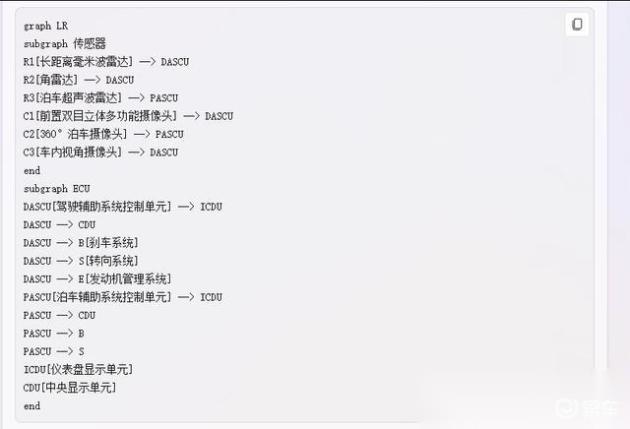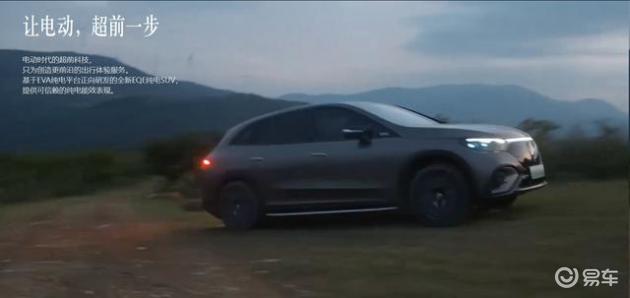Mercedes-Benz EQE Intelligent Driver Assistance System: How to Realize L2 Automatic Driving Experience?

It is the first domestic pure electric vehicle developed by Mercedes-Benz brand in China market based on EVA pure electric platform. It is positioned as a medium and large luxury pure electric car and officially listed on August 24th, 2022. In addition to selling points such as long battery life, luxurious interior and pioneer appearance, Mercedes-Benz EQE also provides L2-level intelligent driver assistance system, which brings users a safer, more convenient and more comfortable driving experience. This paper will introduce in detail the composition, function and implementation of the intelligent driver assistance system of Mercedes-Benz EQE, and compare it with competing products of the same level.
Mercedes-Benz EQE provides 23 sensors related to the intelligent driver assistance system, including:

A long-distance millimeter-wave radar: located in the center of the front bumper, it can detect vehicles, pedestrians and obstacles within 200 meters ahead, and is used to realize adaptive cruise, automatic emergency braking and other functions.
Four corner radars: located on both sides of the front and rear bumpers, which can detect targets within 60 meters around the vehicle, and are used for blind spot monitoring, lane keeping, lane change assistance and other functions.
12 parking ultrasonic radars: distributed on the front and rear bumpers, which can detect obstacles within 1.5 meters around the vehicle, and are used to realize parking radar, automatic parking and other functions.
A front binocular stereo multifunctional camera: located above the windshield, it can capture the image information of the road environment ahead, and is used to realize the functions of road traffic sign recognition, intelligent far and near light control, pedestrian detection and so on.
Four 360 parking cameras: located under the front grille, the rear tailgate and the rearview mirrors on both sides respectively, which can splice panoramic images around the vehicle for realizing 360 panoramic images, AR real-life traversing navigation and other functions.
1 in-car viewing angle camera: located above the dashboard, it can monitor the driver’s attention state and be used to realize the functions of ATTENTION ASSIST.
These sensors are connected with multiple electronic control units (ECU) through high-speed buses, such as:
Driver assistance system control unit (DASCU): It is responsible for processing data from radar and camera, and outputting corresponding control signals to other ECU or actuators, such as brake system, steering system and engine management system.
Parking Assist System Control Unit (PASCU): It is responsible for processing data from ultrasonic radar and camera, and outputting corresponding control signals to other ECU or actuators, such as brake system and steering system.
Dashboard display unit (ICDU): It is responsible for displaying information and tips from DASCU and PASCU, such as navigation arrows, traffic signs and early warning icons.
Central display unit (CDU): It is responsible for displaying information and tips from DASCU and PASCU, such as panoramic images, vehicle status, system settings, etc.
The schematic diagram of the intelligent driver assistance system of Mercedes EQE is as follows:

Mercedes-Benz EQE’s intelligent driver assistance system provides many functions, which can be divided into two categories: driving assistance and parking assistance, as follows:
Adaptive Cruise (ACC): It can automatically adjust the vehicle speed according to the set speed and distance, and keep a safe distance from the vehicle ahead. At the same time, it can automatically adjust the vehicle speed according to navigation information, traffic signs and road conditions, such as in corners, intersections, toll stations and other scenes.

ACCA: On the basis of ACC, it can automatically identify and follow the vehicles driving in the same direction ahead according to the navigation information, and realize partial automatic driving on expressways or urban expressways.
Lane keeping (LKA): The lane line on the road can be identified by the camera, and the vehicle can be kept in the current lane through steering intervention. At the same time, it can automatically switch to the correct lane at the right time according to the navigation information.
Lane change assist (LCA): When ACC and LKA are turned on, the lane change assist function can be activated by the turn signal, and the system will detect whether the target lane has enough space and safe distance, and help the vehicle to complete the lane change action through steering intervention.
Blind spot monitoring (BSD): Blind spots at the rear and side can be detected by angle radar, and corresponding warning lights can be displayed on the rearview mirror. If a car is detected and the driver turns on the turn signal, the system will give an audible warning and increase the steering resistance to remind the driver of the danger.
Automatic emergency braking (AEB): Vehicles, pedestrians and obstacles in front can be detected by radar and camera, and visual and sound warnings can be given successively according to the collision risk, and the braking force is increased. If the driver fails to respond in time, the system will automatically start the maximum braking force to avoid or mitigate the collision as much as possible.
Road traffic sign recognition (TSR): Speed limit signs, prohibition signs, warning signs, etc. on the road can be recognized by the camera and displayed on the dashboard.